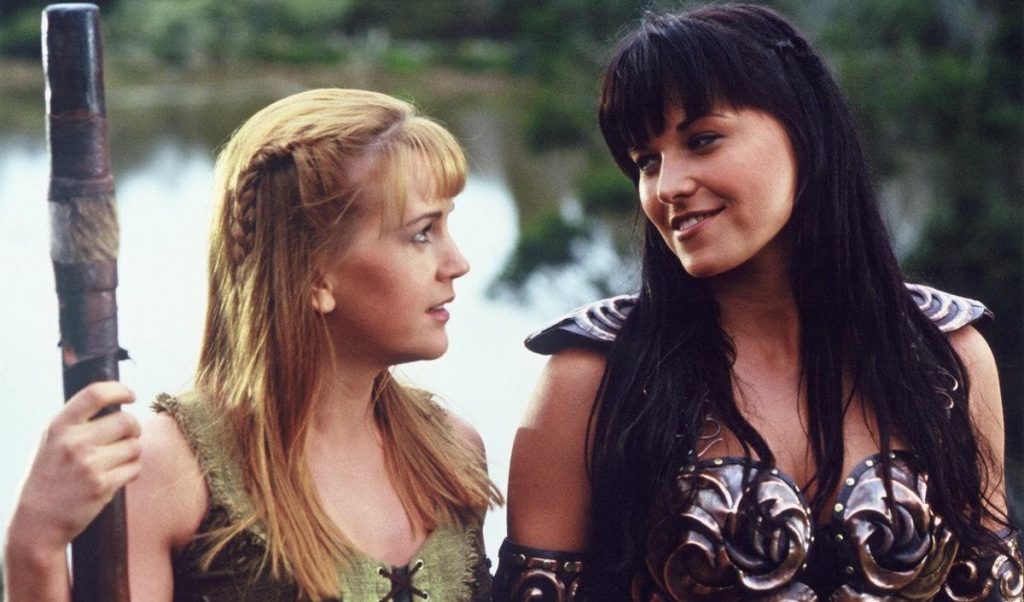Disclaimer: This is explicitly an opinion piece.
by Gabii Rayner
Queerbaiting can be understood in two different ways; as the presentation of queer-coded characters/relationships without production teams overtly addressing or acting upon it, or as the promise for queer representation that ends up as a throwaway moment or something that ultimately doesn’t affect the plot.
Regardless, queerbaiting is clearly (and has been defined as) nothing short of a marketing ploy to bring in pink money – the purchasing power of the LGBTQ+ community. Whilst there’s debate over the fine line between queerbaiting and fan service, there is a clear desire for queer representation that often ends up being exploited for both the big and small screens, without the validation and comfort that so many queer viewers seek, and are often promised. Here are just a few examples:
STAR WARS: THE RISE OF SKYWALKER (2019)

In an interview with Variety magazine, Star Wars: The Rise of Skywalker director J.J. Abrams stated that “in the case of the LGBTQ community, it was important to me that people who go to see this movie feel that they’re being represented in the film”, flirting with the suggestion that queerness would be overtly presented to the audience.┬á
To many, this was an indication that the iconic sci-fi series was about to do what it never had before — establish an openly queer character or relationship, despite Abrams making it clear that fan favourites Poe Dameron and Finn were not involved. This was much to the disappointment of Poe’s actor, Oscar Isaac, who also spoke to Variety:
“”Personally, I kind of hoped and wished that maybe that would’ve been taken further in the other films, but I don’t have control,” Isaac said. “It seemed like a natural progression, but sadly enough it’s a time when people are too afraid, I think, ofÔǪ I don’t know what.”
Isaac noted that the “ambiguity” of the characters’ relationship might allow more people to see themselves in the characters. “But if they would’ve been boyfriends, that would have been fun.””
Nevertheless, queer viewers opened their purses and wallets for tickets, and looked forward to explicit representation as promised, only to be offered a brief kiss between two background female characters in a way that was both fleeting and forgettable. For audiences in China (notorious for queer censorship as seen in the historical drama The Untamed), this scene was cut entirely, emphasising Disney’s priority of profit over people.┬á
XENA & GABRIELLE – Xena: Warrior Princess (1995-2001)

Despite confirmation years later by lead actress Lucy Lawless that the titular Xena and her best friend Gabrielle were very much in love, queer and ally viewers alike were left feeling as though the protagonists’ relationship could easily have been made an official part of the story as opposed to stopping short of a clear relationship, despite the loyalty, intimacy and love shown between the two powerful women.┬á
Season 2, Episode 13 (ÔÇÿThe Quest’) even presents a kiss between them, but neither sexuality nor their sapphic relationship is addressed in the show. However, the 1995-2001 period during which the show aired perhaps played a role in just how overt this could be in terms of social acceptance, with many viewers interpreting Xena and Gabrielle as undeniably queer-coded even without a concrete explanation or confirmation within the show.
ARCHIE & JOAQUIN/BETTY & VERONICA – Riverdale (2017-)

The CW’s Riverdale faced relentless backlash online for its infamous queerbaiting, presenting teasers and scenes to the audience that depict kisses between two male characters (Archie and Joaquin) and two female characters (Betty and Veronica), despite only one of the four being confirmed as a gay character.
Both embody queerbaiting in its most epitomising sense, presenting kisses in promotional teasers intended to draw in LGBTQ+ viewers, without the follow through of a queer relationship or even the full contexts of non-consent or an attempt to ÔÇÿspice up’ a cheerleading routine.
Queerbaiting in these senses are damaging to both LGBTQ+ viewers and those outside of the community; it presents queerness as either something to be kept hidden away in comparison to the openness of heterosexuality, or as something that only acts to bring in money, to bring in audiences and to sexualise characters.
The desire to be represented in full by complex characters in a rich, diverse world in order to feel seen and understood by those who may not necessarily have queer people in their life is not an unreasonable one. It’s been achieved perfectly in shows such as Sense8 and Orphan Black and in the Oscar-winning film, Moonlight. The argument that television and film is “only fiction” is a lazy excuse for not allowing millions of people to be visible in media, particularly when representation is already so heavily in favour of cisgender, heterosexual characters.
Whilst progress doesn’t necessarily require showing same sex relationships on screen (queerness is inherently valid even without acting upon it), the teasing of queer characters and relationships without follow through needs to end. Queer characters need to be presented to audiences in all their complexity and without restraint.┬á
Sources:
Star Wars Variety interview: https://variety.com/2019/film/news/star-wars-finn-poe-not-boyfriends-lgbtq-representation-1203423286/
Lucy Lawless confirms Xena and Gabrielle as a couple: https://www.youtube.com/watch?v=8-dv3s1r8gM
Instagram: @quenchfilm
Write for us: email filmtv@quenchmag.co.uk or join the Facebook group where all pitches are posted
Our articles: Film & TV


